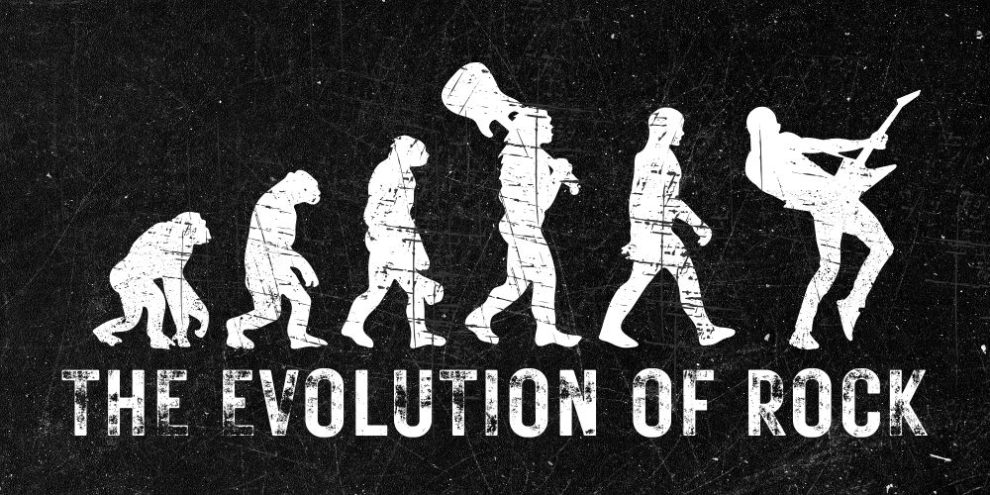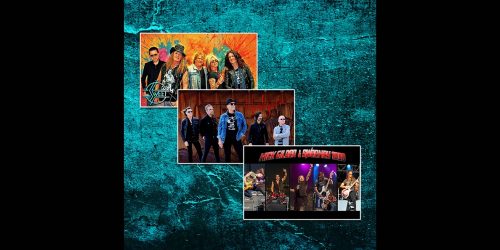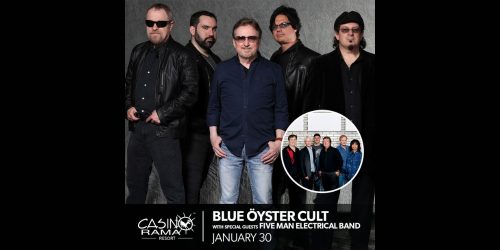The Evolution of Rock: From Blues Roots to Modern Influences

You know the sound … a gritty guitar riff, a raspy voice full of emotion, and lyrics that hit like a gut punch. That’s rock. Loud, rebellious, and unforgettable.
But rock didn’t start in packed stadiums or on Billboard charts. Its roots run deep into the dusty backroads of the American South, where blues musicians laid the foundation for a genre that would go on to change music forever.
Here’s how rock evolved from its raw beginnings into the massive, ever-shifting force it is today.
Snag Our Newsletter
It All Started With the Blues
Before rock had a name, it had a soul — and that soul came from the blues.
Artists like Robert Johnson, with his legendary “Cross Road Blues,” turned guitar playing into a storytelling art form steeped in mystery and soul. Bessie Smith’s powerful voice gave the blues an unmatched emotional depth, while Muddy Waters electrified the genre, plugging in and bringing the sound into urban Chicago nightclubs, setting the stage for a revolution.
“The blues had a baby and they named it rock and roll” – Muddy Waters
Blues introduced many of the essential building blocks for rock: the 12-bar structure, call-and-response vocals, expressive guitar solos, and a groove that made people move. When those blues rhythms met the electric guitar’s wail, a new kind of energy sparked. It was raw, rebellious, and unlike anything heard before.
Rock 'n' Roll Lights the Fuse
The 1950s brought blues roaring into the mainstream, fueled by a collision of country twang, gospel passion, and R&B groove. This explosive mix birthed rock ‘n’ roll — music that hit hard, fast, and unapologetically.
Chuck Berry’s slick guitar riffs and sharp storytelling captured teenage life with wit and swagger. Little Richard’s wild energy and flamboyant piano style shocked and delighted audiences, laying down a new template for rock’s showmanship. And then there was Elvis Presley — a controversial figure who borrowed heavily from Black artists like Big Mama Thornton and Arthur “Big Boy” Crudup to become the face of rock for millions. His blend of styles and provocative moves ignited cultural shifts far beyond music.
Rock 'n' roll gave young people a voice, challenged racial barriers, and rewrote what music could mean to a generation hungry for change.
The British Invasion Changes the Game
In the early '60s, the U.S. exported rock … and the UK sent it back louder.
The Beatles redefined what a band could be. They turned rock into both art and pop phenomenon. The Rolling Stones leaned into gritty blues roots with swagger. The Who turned up the volume, smashed guitars, and injected attitude into everything.
Meanwhile, The Yardbirds and Cream pushed guitar playing into new territory … setting the stage for Clapton, Page, Beck, and Hendrix to rewrite what the electric guitar could do.
The British Invasion was a seismic shift that brought rock to a global scale and made it a cultural force to be reckoned with.
Psychedelia, Protest, and Getting Weird
As the decade rolled on, rock got more experimental — and more political.
Psychedelic rock exploded onto the scene, with bands like The Doors, Jefferson Airplane, and Pink Floyd experimenting with studio effects, extended jams, and surreal lyrics that captured the era’s sense of exploration. The music became an invitation to escape, to challenge perception, and to question authority.
At the same time, folk-rock legends like Bob Dylan and Neil Young wielded their guitars and pens as tools of protest. Songs about civil rights, the Vietnam War, and generational divides cut through the noise, galvanizing youth to think and act differently.
Rock wasn’t just for entertainment — it was protest, identity, and philosophy all rolled into one. And it shaped how people saw the world and how they responded to what was happening around them.
The 70s: Big Sounds, Big Bands, Big Hair
In the 1970s, rock branched out in a hundred directions.
Progressive rock acts like Yes, King Crimson, and Genesis pushed the limits of complexity and concept. Hard rock and early metal arrived with thunder — think Led Zeppelin, Deep Purple, and Black Sabbath. Then came glam rock, with David Bowie, Queen, and T. Rex making rock theatrical, glittery, and genre-bending.
Meanwhile, down south, bands like Lynyrd Skynyrd and The Allman Brothers were creating a whole new flavor with Southern rock — a blend of blues, boogie, and bar-band attitude.
The mainstream charts were packed, but under the surface? The underground was starting to bubble.
Punk Punches Back
By the mid-70s, the grandiosity of prog and arena rock left many listeners craving something simpler, faster, and more direct. Enter punk — fast, loud, and anti-everything.
The Ramones condensed rock to its primal core — three chords, short songs, and relentless energy. The Sex Pistols screamed rebellion, flipping off societal norms and the British establishment. The Clash combined punk’s attitude with reggae rhythms and sharp political commentary.
Punk was a rejection of polished commercialism. It sparked global DIY scenes, inspiring fans to form bands, print zines, and book shows in basements.
From punk’s ashes rose hardcore — faster, heavier, angrier — with bands like Black Flag and Minor Threat pushing limits physically and politically. Post-punk acts like Joy Division and Siouxsie and the Banshees embraced darkness and experimentation, adding texture and mood.
And then came new wave — punk’s more artful sibling. Bands like Talking Heads, Blondie, and The Cars brought synthesizers, dance rhythms, and quirky styles, creating the blueprint for the 80s sound that would dominate airwaves and MTV.
This era marked punk’s evolution from raw rebellion to a sprawling creative movement that shaped everything after it.
The 80s: Excess on Top, Innovation Underground
Rock in the 1980s split in two — the polished and the raw, the stadium and the club, the hairspray and the angst.
On the mainstream side, hair metal ruled the airwaves. Bands like Mötley Crüe, Poison, and Bon Jovi brought blistering guitar solos, big choruses, and even bigger hair. MTV turned rock into a visual spectacle, and bands leaned in hard — think neon lights, leather pants, and arena-sized swagger. Van Halen’s shredding and Def Leppard’s hooks were built for massive stages and maxed-out car stereos.
But beneath the surface, something was brewing.
New wave picked up where punk left off, mixing angular guitars, synth-heavy sounds, and a dash of artsy detachment. Talking Heads, Devo, The Cure, and The Smiths redefined what a rock band could look and sound like. It wasn’t about volume — it was about vibe, irony, and aesthetic.
Meanwhile, in dorm rooms and dive bars, college rock and indie scenes were laying the groundwork for the alt explosion to come. Bands like R.E.M., Hüsker Dü, and The Replacements proved that rock didn’t need flash — just heart, grit, and a four-track recorder.
At the heavier end, thrash metal was ripping through basements and breaking necks. Metallica, Slayer, and Megadeth took the speed and aggression of punk and welded it to blistering technical precision — planting the seeds for metal’s next evolution.
The 90s Get Gritty
The 90s were all about breaking the mold. Rock had never been this fragmented … or this creative.
Grunge exploded out of Seattle. Nirvana’s Nevermind cracked the pop charts wide open, dragging the underground with it. Pearl Jam, Soundgarden, and Alice in Chains followed, combining the riff-heavy weight of Sabbath with the rawness of punk and the vulnerability of confessional songwriting.
At the same time, alternative rock exploded. Smashing Pumpkins. Nine Inch Nails. Radiohead. These weren’t radio darlings — but they had loyal fanbases, sprawling sonic palettes, and zero interest in selling out.
The 90s also gave rise to pop-punk (Green Day, Blink-182), shoegaze (My Bloody Valentine, Slowdive), and post-rock (Godspeed You! Black Emperor, Explosions in the Sky).
Rock was still angry, still personal — but now it was layered with self-awareness and a growing sense of experimentation.
Rock in the 2000s and Beyond
By the 2000s, rock wasn’t dominating pop culture like it once had — but it was far from dead.
Indie rock exploded with The Strokes, Arctic Monkeys, Franz Ferdinand, and The White Stripes — bands that stripped things back to basics and made guitars cool again. Emo broke hearts (and charts) with My Chemical Romance, Fall Out Boy and Dashboard Confessional. Artists blurred lines even further, mixing rock with hip-hop, EDM, and folk.
Linkin Park fused metal with rap. Twenty One Pilots merged rock with alt-pop and synths. Even mainstream pop stars started sampling rock aesthetics and collaborating with legacy rockers.
Today, rock is less a single genre and more a spirit — one that shows up in fashion, film, attitude, and across playlists.
Rock Isn’t Dead — It’s Just Evolving
Rock music isn’t stuck in the past. It’s constantly reinventing itself — borrowing from what came before and fusing it with what’s next.
Its roots may be in the blues, but its branches stretch across generations, cultures, and continents. Whether it’s screaming through an amp or whispered over acoustic strings, rock’s raw energy continues to shape the sound of now.
It’s not about staying the same. It never was.
It’s about evolution — and rock is still rocking it.
Snag Our Newsletter
Hit that button like you’re pressing play on your favourite track. get exclusive content, stories, and news.







